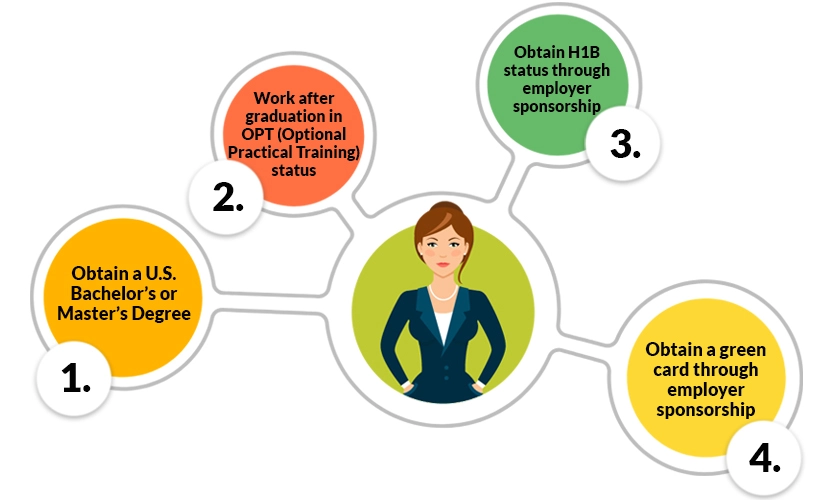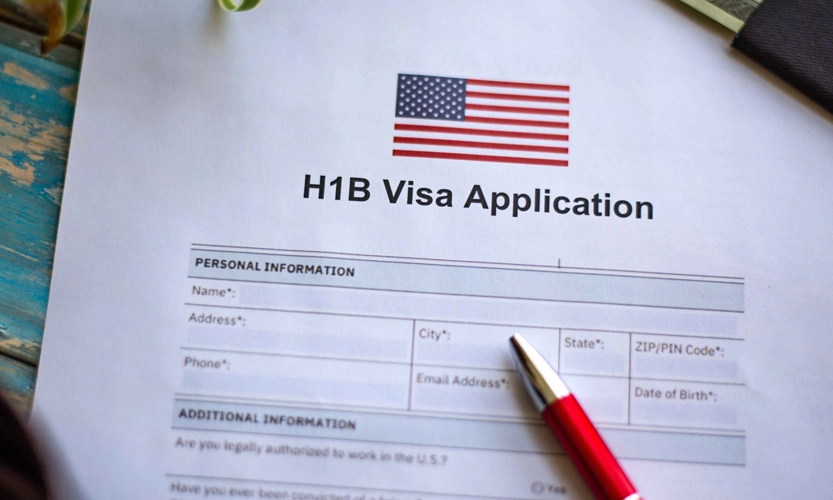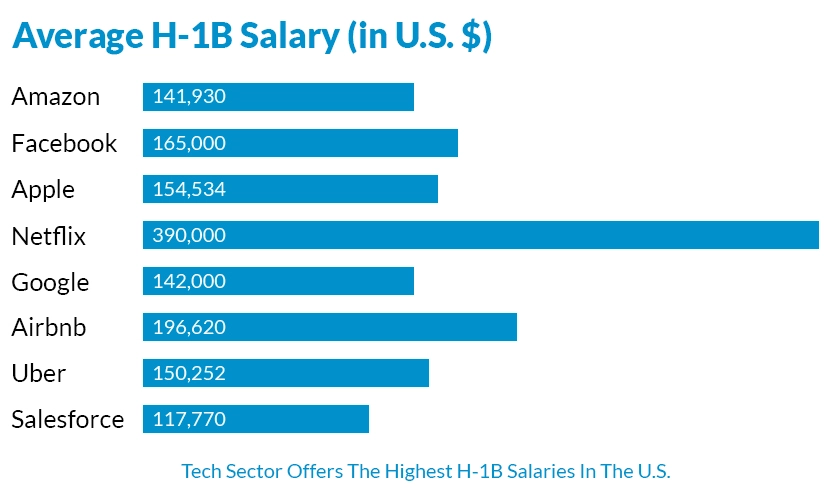Students on F1 visas often get bewildered about changing from an F1 OPT Visa to an H1B status. At this point, they are left with two options: to apply for an H-1B visa after receiving a U.S. job offer or return to their home country with an expired F1 visa post OPT completion. The entire situation also leaves employers uncertain about how to retain the services of their talented F1 OPT Visa employees once they have completed their OPT period. To streamline the process, we are providing the procedure and the essential factors you should consider when moving from F1 OPT Visa to H1B.
Before hopping onto how to change from F1 OPT Visa to H1B, let’s first focus on the key concepts involved in the status change.
OPT (Optional Practical Training)
OPT stands for Optional Practical Training. It is a temporary period during which the USCIS permits undergraduate or graduate international students on F1 visas to work in the U.S. while pursuing their degree or after completion. F1 OPT Visa students become eligible to work after receiving Employment Authorization Document. Students leverage several benefits from F1 OPT Visa status, such as:
- Gain real-world practical experience in their major field of study.
- Work and stay in the U.S. for 12 months period.
- Convert to H-1B visa status.
- Apply for STEM OPT Extension to stay for an additional 24 months if they pursue a Science, Technology, Engineering, or Math degree.
H1B Visa
H-1B is a non-immigrant or temporary visa program that enables U.S. employers to hire foreign workers in specialty occupations, which means that an H-1B holder is required to have some specialized knowledge or skills along with a bachelor’s degree or equivalent for which the employer couldn’t find a US-based worker. F1 students can also get an H1B visa after graduation or during their F1 OPT Visa period under a separate H-1B quota. H-1B visa holders are permitted to:
- Procure practical experience of their theoretical knowledge.
- Authorized to work in the U.S. for 3-6 years.
- Travel in or out of the U.S. if they maintain a valid H-1B status.
- Bring their children and spouse to the U.S. on an H-4 visa.
- Apply for a green card or permanent residency in the U.S.
H-1B Visa Cap
USCIS issues a maximum of 65,000 visas each fiscal year and keeps an additional set of 20,000 visas for people with advanced degrees like Masters or Ph.D. from a legit institution of U.S.
The USCIS has even introduced an H-1B quota for international students under which F1 students can change or transfer their status directly from F1 to H1B by acquiring a suitable H-1B sponsorship position in an H1B sponsor company. However, many students prefer using their F1 OPT Visa program as an interim measure for getting H-1B status.
The employers can file an H-1B petition up to six months before the actual need for the beneficiary’s services. As October 1 is the start of the fiscal year in the U.S. employers can file an H-1B petition by April 1 for the upcoming fiscal year.
Documents required for moving from F1 OPT Visa to H1B Visa
You need to affix the following documents with the H-1B visa application:
- Official job offer with the job description- Once you secure a job in a US-based company, you should ask the employer to provide a written official job offer indicating that they will sponsor your H1B visa. You must also provide a detailed description of your roles and responsibilities for the job. It is the most important document that proves your H1B sponsorship.
- A copy of your resume and degree– You should attach your resume and degree with the H-1B application as it truly reflects your skills. Ideally, H-1B visa applicants must have specialized knowledge or an advanced degree within their field of study, so your resume must demonstrate it.
- Passport- It is essential to have a valid passport issued by your home country to immigrate with H-1B status.
- Former experience letters with job title and date of employment– It is indispensable for H-1B applicants to get their qualifications and skills verified by providing previous experience letters. The letters validate the competency of applicants in performing their duties.
- Biological Information IDs- The applicants must also provide biographical information, including full name, nationality, DOB, permanent address, birth certificates, and marriage certificates.
- Copies of I-20 Certificate– The I-20 Certificate is authentic proof of non-immigrant student status, which verifies that you have a valid F1 visa.
Things to consider when Changing Status from F1 OPT Visa to H1B
Below are some measures you need to take to file an H1B application:
- Find an employer sponsoring H-1B Visa- The only path to applying for an F1 OPT Visa to an H1B visa is to obtain a job offer from an H1B sponsor company; thus, you need to find an H1B sponsoring employer. Ensure that the employer is in good standing to confirm that the employee will be paid 95% of the existing wage of the occupation. Also, the employer must be able to demonstrate to USCIS that H1B workers will not have any adverse effect on the work conditions of U.S. workers.
- Get your employer to file an H-1B petition on your behalf- Once you receive the job offer, your employer should file an H-1B visa petition for a status change before the prescribed deadline. If your H-1B visa petition gets sanctioned, you will be granted H-1B status. Thereon, you can start working on your H-1B visa status from October 1 as instructed by the USCIS.
- Filing of H-1B petition before the deadline- As there are certain limitations on issuing the number of H-1B visas each fiscal year, you should be watchful of the H-1B cap. In order to successfully acquire an H1B visa for the next year, you must timely file your H1B petition.
- Check eligibility for H-1B cap-gap extension- If you have filed an H-1B visa petition, but your case is still pending, you may become eligible for a cap-gap extension wherein you are allowed to remain in the U.S. on F1 visa status until your H-1B employment is approved.

Process of filing H1B Application
According to the guidelines of USCIS, only the H-1B sponsoring employer can file your H1B petition. Following are some simple steps that an H-1B petitioning employer must take:
- First, the employer needs to file a Labor Condition Application (LCA) with the US Department of Labor.
- Now, complete two forms, Form I-129, a Petition for a Non-immigrant Worker, & Form I-129 H Classification Supplement.
- Submit all the required supporting documents as required.

How to maintain H1B Status?
The approval of your H-1B status is for a specific position, a fixed salary, and an employer. To avoid violating your status, you should only perform the duties defined in your H-1B petition for the company that sponsored your visa.
- If you want to maintain your H1B status, you should maintain your employment as the H1B employees who resign or get laid off from their position fall out of the status and ultimately have to leave the U.S.
- You can only stay in the U.S. on an H-1B visa by working and getting paid. If your employer stops paying you wages, you are legally obligated to terminate your contract.
- To ensure you have plenty of job opportunities, acquaint yourself with the latest technologies. The technology sector is the most flourished domain generating thousands of career-building opportunities. So, immerse into the technical sphere by enrolling in certifications in Java, Machine Learning, Python, Hadoop, MERN Stack, AWS, and other cutting-edge technologies.
- Procure additional high-demand skills for which there is a shortage, like data scientists, data analysts, Machine Learning Engineers, Cloud developers, etc.

Conclusion
Students must conduct extensive market research before taking a job or on F1 OPT Visa to find the right employer. It is crucial to understand that not all F1 OPT employers in the U.S. sponsor H-1B visas. Therefore, you should consider contacting the HR of your prospective company to know if they are sponsoring H-1B.
The best practice for students is to search for employers who can sponsor H-1B after completing their F1 OPT period. Some employers can sponsor an H-1B if they find that you are the best fit for their company, and any U.S. citizen cannot replace your experience or skills. So, it’s of utmost importance to maintain the quality of your work and upgrade your skills. Also, you should have a healthy professional relationship with your company’s HR manager, so you can get an H-1B sponsorship from your current OPT employer.
Anytime you want to upgrade your skills and need a helping hand to enter or re-enter the tech workforce with high-demand tech skills, reach out to us. Since 2010 we have helped 1000’s of jobseekers achieve success in the technology sector, making our Candidate Success Outcome the best in the industry. SynergisticIT’s career-oriented training programs guarantee fast-paced, quality tech education, preparing you with top-notch skills for coveted tech roles in the industry. Reach out to us. SynergisticIT– Home of the Best Data Scientists and Software Programmers in the Bay Area!
